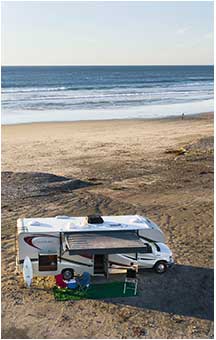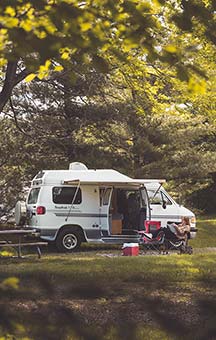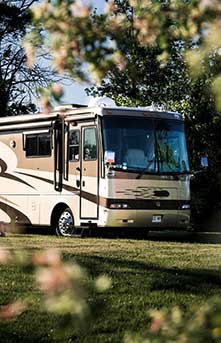In 1904, an ambitious travel writer and librarian, Horace Kephart, retreated to the woods to declutter his mind and seek peace within the Great Smoky Mountains. He would spend years capturing the daily life of settlers in Southern Appalachia.
Over the next twenty years, he would watch logging companies cut down vast tracts of trees, wiping out nearly two-thirds of the surrounding forest.
Disheartened by the devastation of the wilderness he cherished, Kephart documented the impact the logging industry had on natural resources and persuaded the public to join his efforts in protecting the land. This protection came by way of a National Park.
According to the National Park Service, achieving national park designation didn’t come easy to the Great Smokies. At the time of Kephart’s musings, this 800-square miles of beloved mountain wilderness was home to hundreds of small homesteads and thriving lumber companies.
The government wasn’t allowed to buy land for national park use. Preserving this southern Appalachian gem meant a complex process of displacing or buying out residents and business owners.
From the day Kephart first walked into the woods, it would be more than 30 years of relentless public pressure and campaigning to create what we know today as Great Smoky Mountains National Park.
Today, the park sees more than 11 million visitors a year, making it America’s most visited national park.
What to See/Do
If You Only Have a Day
There are over 800 miles of hiking trails in the Smokies. If you’re only in the area for a day, there are plenty of opportunities to jump on trail for a quick trek. Not to mention, 400 miles of scenic road will take you through some of the park’s most spectacular sights.
Clingman’s Dome
You won’t want to miss an opportunity to hike to the park’s highest point. At 6,643 feet, Clingman’s Dome is just a half-mile (out and back) hike along a moderate, paved trail. One of the most visited points in the park, Clingmans Dome offers unobstructed, 360-degree views of the Smokies.
If you’re feeling extra adventurous, there are several other, lengthier trails. Check out Forney Creek Trail, Noland Divide Trail, and a portion of the Appalachian Trail that leads you through the towering trees to rustic cabins and cascading waterfalls before reaching the top of the mountain.
Cades Cove
Cades Cove, arguably the most popular destination in the Great Smokies, is a large, lush valley surrounded by wilderness and a perfect place to spot wildlife.
Accessing Cades Cove is easy enough – just hop the 11-mile, one-way loop road that encircles the cove. From there, you can either opt to sightsee from the car or grab a park map and hit the trail.
Popular trails in Cades Cove include the 5.2-mile (RT) trail to Abram Falls, a 20-foot waterfall surrounded by dense pine-oak and hemlock trees. The trail can be challenging, mostly due to the terrain, so you should expect to be on the trail for 3-4 hours.
But Abram Falls isn’t the only noteworthy waterfall in Cades Cove. Laurel Falls is a shorter trek, at just 2.6 miles (RT), and will take you to an incredible 80-foot cascading waterfall.
If you’re willing to put in a little more effort, the 8.5-mile Rich Mountain Loop is a classic Smokies trail that will take you to John Oliver’s historic cabin, the 25-foot Crooked Arm Falls, and finally climbs to Cerulean Knob – the tallest point on Rich Mountain.
Take a Scenic Drive
One of the things that makes the Smokies so unique is the park’s drivability. There are 384 miles of road to choose from in the Smokies and booklets are available to offer important insight into popular landmarks, park history, wildlife, and plants.
So, if you’re just dropping into the park and don’t have much time, you don’t have to feel like you’re missing out. A scenic drive is an excellent way to experience the grandeur of the Great Smoky Mountains.

The 31.63-mile Newfound Gap, which connects Gatlinburg, Tennessee to Cherokee, North Carolina, is the lowest drivable pass through Great Smoky Mountains National Park. The road quickly ascends 3,000 feet through a variety of forest ecosystems and offers incredible, iconic Smoky Mountain views at popular turnouts like Campbell Overlook, Morton Overlook, Oconaluftee Valley Overlook, and Webb Overlook.
If you’re feeling restless, several popular trailheads, including Clingmans Dome, The Gatlinburg Trail, and Alum Cave Trail can be found along the way. When you’re ready to stop for lunch, head to one of two developed picnic areas, Chimey’s or Collins, to kick back beneath the trees.
Don’t forget to drop by Sugarlands Visitor Center or Oconaluftee Visitor Center to grab a map and some quick facts about the rich history found within the park!
If You Have More Time
While the Smokies have a lot to offer from the front seat of a car, if you have more than a few days in the park, we recommend you ditch the crowds and hit the backcountry.
If you’re spending more than a few days in the park, consider hopping on the iconic 2,200-mile Appalachian Trail. The Appalachian Trail traverses 72 miles through the Great Smoky Mountains National Park. It takes approximately seven days to hike the full GSMNP portion of the AT, but the trail can also be split into smaller sections.
If the Appalachian Trail is a little too ambitious, consider hiking Mount LeConte, one of the most popular and scenic footpaths in the park. This 13-mile trek isn’t the longest or most challenging climb in the park, but it features unique geological features, highlights the park’s history, and offers stunning panoramic views of the Smokies. Once you reach the top of the mountain, you can pick up a picnic-style lunch or spend the night in a historic cabin before you heading back to your car.
Know Before You Go
Permits and Fees
Reservations and permits are required for all backcountry camping in the park. Backcountry reservation fees are just $4.00 per person, per night, and are good for seven nights.
The Appalachian Clubhouse and Spence Cabin, two rustic, historic buildings in the heart of the park, can also be rented in advance for large events. The Appalachian Clubhouse ranges from $250-$400 per day, and the Spence Cabin is $550-$600 per day.
Park Entrance Fees
We’ve got some great news – Thanks to the state of Tennessee, entrance to the Great Smoky Mountains National Park is FREE!
Back in the 1930s, Tennessee and North Carolina partnered with local communities to construct the Newfound Gap Road (US-441). According to the National Park Service, when Tennessee transferred ownership of the road to the federal government, it stipulated that “no toll or license fee shall ever be imposed…” to travel the road.
Be Bear Aware
The Great Smoky Mountains are home to the densest black bear population in the eastern United States. Biologists estimate that 1,500 bears live in the park. Bears in the park are wild and unpredictable, so it’s essential to understand proper food storage and know what to do if you encounter a bear.
We recommend that you check the park’s temporary closures list for updated information on where bears are most active.
Most importantly, keep you and your loved ones safe by always remaining a safe distance from all wildlife.
Best Time to Visit
Great Smoky Mountains National Park never close, so there’s really not a bad time to experience the park. The landscape can change drastically from season to season, but each season offers something unique. There are a few things you’ll want to consider before you pick the perfect time to visit the park.
Summer (June to August)
As the weather warms up, the park gets a lot more visitors. Summer months are the busiest time in the Smokies, which means plenty of high-altitude hiking and outdoor adventures are accessible. Evenings are comfortably cool, so it’s a great time for stargazing and late nights by the campfire.

You should plan on sharing the trail with others and spending time in traffic, particularly around Cades Cove and along Newfound Gap. Reservations for hotels, cabins, and campsites fill up fast in summer months, so if you’re hoping for accommodations inside the park, you’ll want to make reservations well in advance.
Fall (September-November)
Leaf-peeping is a popular pastime on the east coast and one of the best places to watch the leaves change. When cooler temperatures arrive in late September and early October, the park explodes in magnificent hues of yellow, orange, and red. Generally, peak fall foliage can be viewed into early November, though Autumn isn’t entirely predictable year to year. Fortunately, a Peak Leaf Forecast is available, so you can stay up to speed on what the leaves are up to and plan your trip accordingly.
Winter (December-February)
Winter months are pretty moderate in the Smokies in terms of temperatures. However, it’s not unusual to experience unpredictable, extreme weather at higher elevations. Some hiking trails and scenic drives close during winter months, but with a little pre-planning, you can still appreciate the beauty of the Smokies in the winter. Winter is the low season in the Smokies, so if you’re looking to experience the park in solitude, winter is definitely the way to go.
Spring (March-May)
Who doesn’t love wildflowers? Great Smoky Mountains National Park is home to over 1,500 types of flowering plants. After a few months of freezing temps, as the park starts to thaw beautifully vibrant flowers decorate the landscape. Although the weather can be unpredictable, sunshine isn’t entirely uncommon making this an excellent season for hiking, camping, and soaking in those epic Smoky Mountain views.






